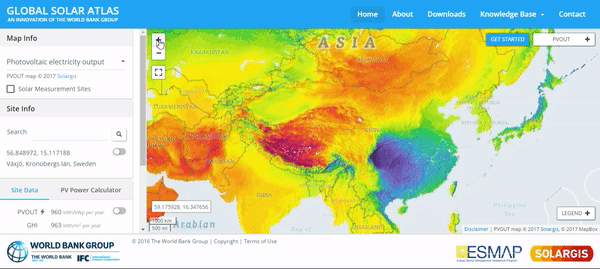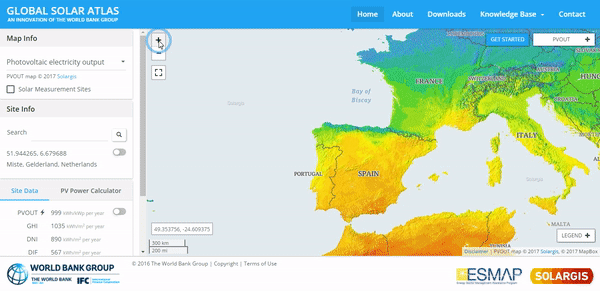New Interactive Atlas Puts Spotlight on Planet’s Solar Power Potential
A new web-based tool provides free access to accurate data about the solar power potential of your location – or any other part of the world.
Recent research has revealed how Americans across the political aisle are united by renewable energy. Roughly the same amount of people with rooftop solar power installations are Republicans and Democrats.
But geographically, not all places on the planet equally suitable for solar power – and that does not only include the amount of solar radiation that reaches the surface. The air temperature and terrain elevation may also impact how well solar equipment will fare in a particular area.
In some regions, less solar panels are needed to generate the same amount of power compared to other areas. The Global Solar Atlas now provides you with a colourful world map that allows zooming in on areas of up to one kilometre.

GIF: Daily Planet
22-Years Worth of Data
The solar map lets you explore how much electricity you can expect to generate at a certain location with residential rooftop solar panels, commercial scale rooftop panels or even a large-scale solar plant.
Powered by 22-years’ worth of satellite data, the visualisation’s accuracy is further backed up with ground-based measurements for areas where data exists. The tool was developed to help renewable energy investors, policymakers and planners identify the best sites for solar power generation.
The World Bank, which built the tool in collaboration with the International Solar Alliance, says the atlas will help save governments millions because they no longer have to do all their own research.

GIF: Daily Planet
Dramatic Cost Decreases
“The World Bank is seeing a surge of interest from our clients in solar power as a result of the dramatic cost decreases over the past few years,” said Riccardo Puliti, a senior director at the World Bank.
Developers and investors are expected to save time by being able to quickly compare regions and countries around the world with just a few mouse clicks or screen taps.
“We hope that the Global Solar Atlas will help inform the crucial planning and investment decisions that will need to be taken over the next decade to shift to more sustainable forms of energy,” Puliti said.
Discover solar start-ups around Europe supported by Climate-KIC, or find out how you could join them.

